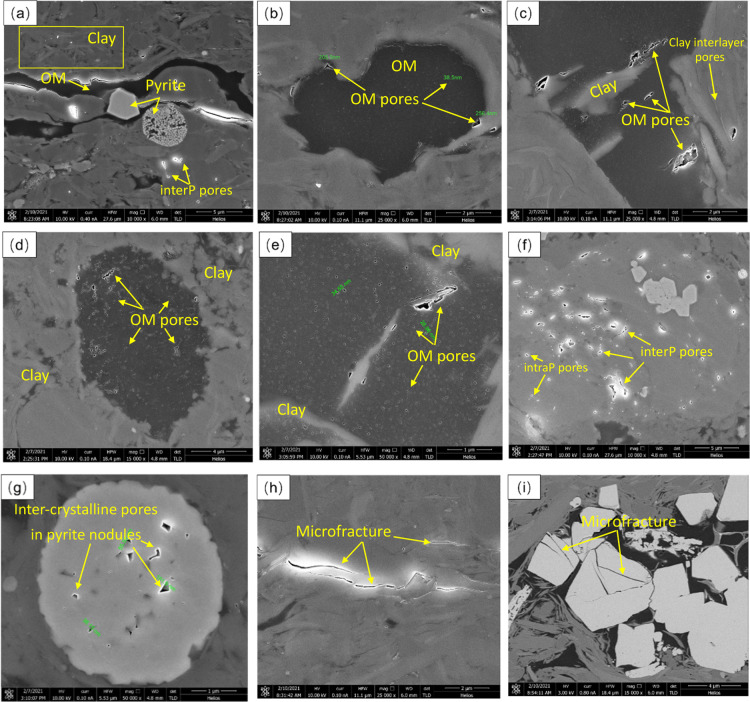Figure 3.
Pore types and their characterization in Longmaxi shales of LZ area. (a) Strip-like OM coexists with pyrite crystals and develops stripped-edge pores; the intergranular pores are developed on the edge of quartz and calcite along with dissolution pores in them; (b) block-like OM develops pores in tens of nanometers inside and large pores at the edge up to hundreds of nanometers; (c) block-like OM coexists with clay minerals; OM pores are shaped irregular; (d) regular elliptical OM develops a large amount of uniform OM pores that are locally connected; sometimes, the pore size can be up to the micron level; (e) OM coexists with clay minerals and develops a large number of OM pores that are locally connected; (f) intergranular pores and intragranular pores in brittle minerals; (g) intercrystalline pores in strawberry pyrite nodules; (h) microfractures develop along the contact boundary between OM and inorganic minerals; and i microfractures penetrate the rigid particles.

